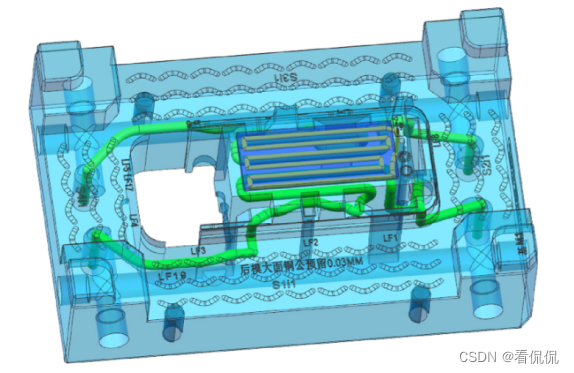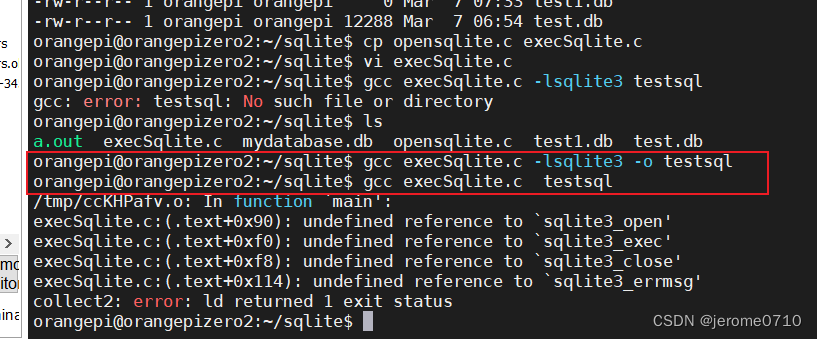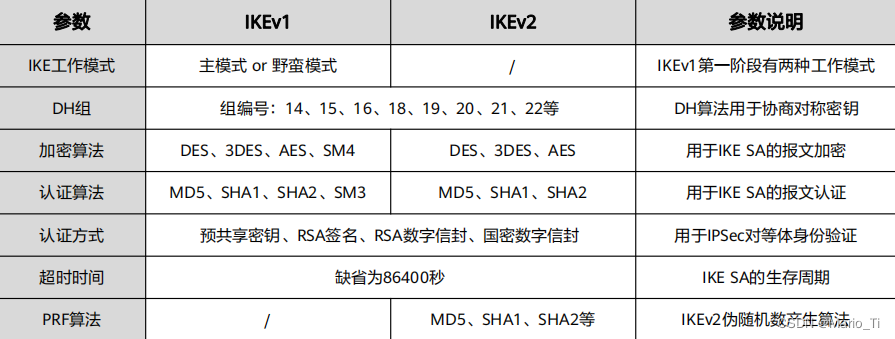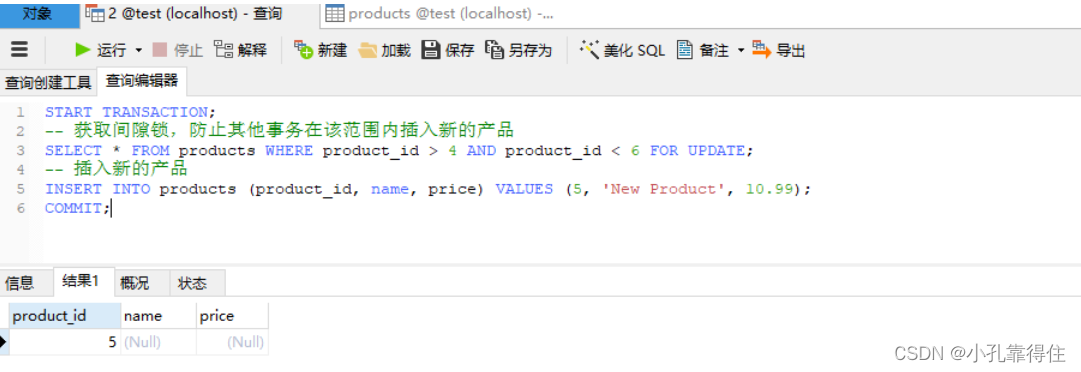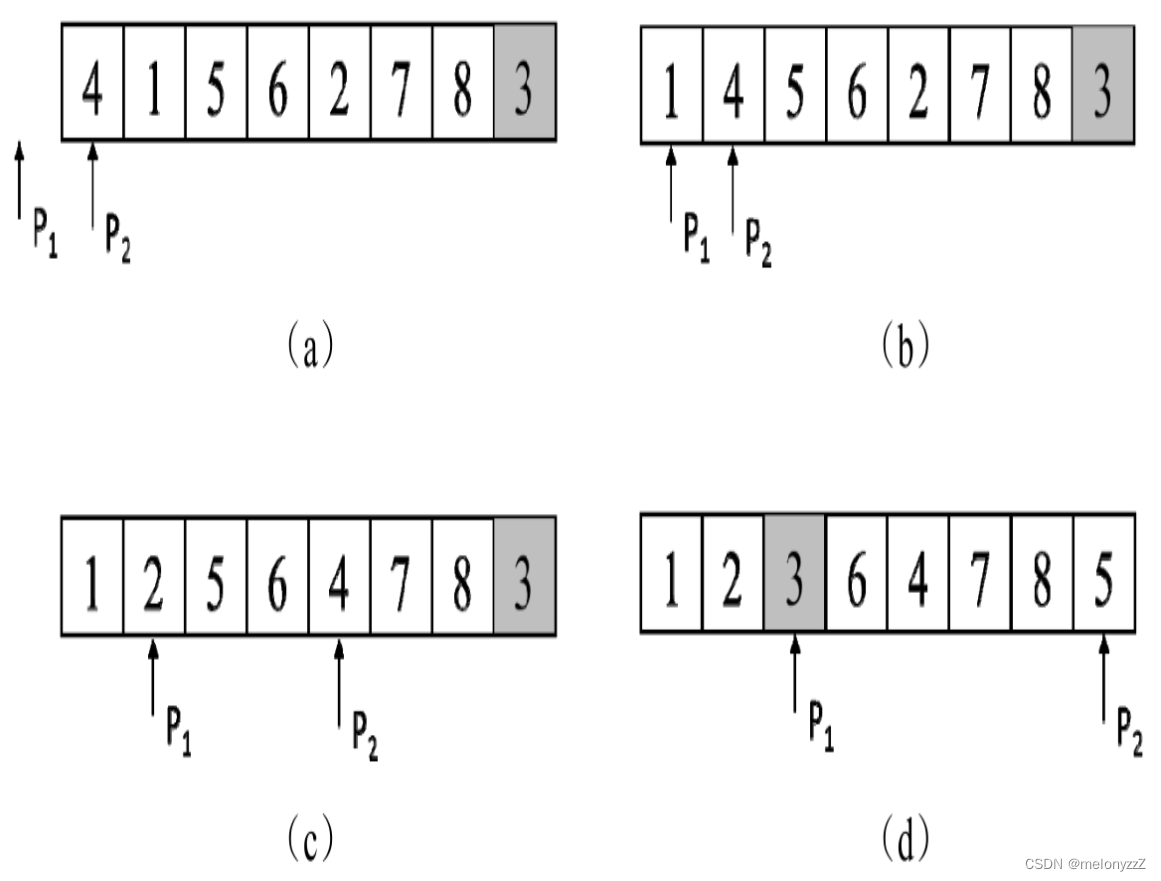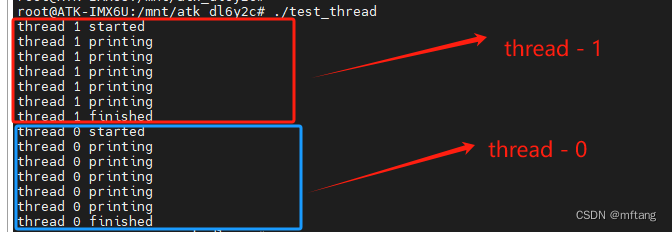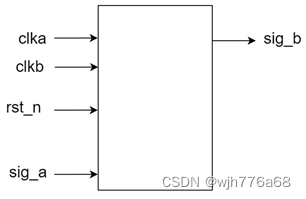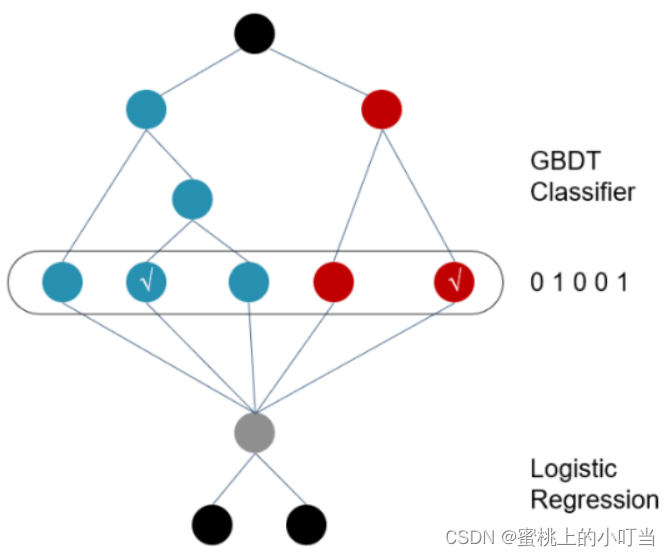随想录日记part15
t i m e : time: time: 2024.03.09
主要内容:今天的主要内容是二叉树的第四部分,主要涉及平衡二叉树的建立;二叉树的路径查找;左叶子之和;找树左下角的值;路径总和;构造二叉树。
- 110.平衡二叉树
- 257. 二叉树的所有路径
- 404.左叶子之和
- 513.找树左下角的值
- 112. 路径总和113.路径总和ii
- 106.从中序与后序遍历序列构造二叉树 105.从前序与中序遍历序列构造二叉树
Topic1平衡二叉树
题目: 给定一个二叉树,判断它是否是平衡二叉树。
示例:

输入: r o o t = [ 3 , 9 , 20 , n u l l , n u l l , 15 , 7 ] root = [3,9,20,null,null,15,7] root=[3,9,20,null,null,15,7]
输出: t r u e true true
思路: 首先我们得清楚以下概念:
二叉树节点的深度:指从根节点到该节点的最长简单路径边的条数。
二叉树节点的高度:指从该节点到叶子节点的最长简单路径边的条数。
l e e t c o d e leetcode leetcode 中强调的深度和高度很明显是按照节点来计算的,如图:

下面给出递归的写法:
class Solution {public boolean isBalanced(TreeNode root) {if(root==null)return true;return deepth(root)!=-1;}// -1 表示已经不是平衡二叉树了,否则返回值是以该节点为根节点树的高度private int deepth(TreeNode root){//这里有个大坑就是子树也必须是平衡二叉树//递归出口if(root==null)return 0;//单层递归的逻辑int left=deepth(root.left);if(left==-1) return -1;int right=deepth(root.right);if(right==-1)return -1;if(Math.abs(left-right)>1)return -1;else return 1+Math.max(left,right);}
}
Topic2二叉树的所有路径
题目: 给你一个二叉树的根节点 r o o t root root ,按任意顺序返回所有从根节点到叶子节点的路径。(叶子节点是指没有子节点的节点。)
示例:
输入: r o o t = [ 1 , 2 , 3 , n u l l , 5 ] root = [1,2,3,null,5] root=[1,2,3,null,5]
输出: [ “ 1 − > 2 − > 5 " , “ 1 − > 3 ” ] [“1->2->5",“1->3”] [“1−>2−>5",“1−>3”]
思路:
这道题目要求从根节点到叶子的路径,所以需要前序遍历,这样才方便让父节点指向孩子节点,找到对应的路径。在这道题目中将第一次涉及到回溯,因为我们要把路径记录下来,需要回溯来回退一个路径再进入另一个路径。
前序遍历以及回溯的过程如图:

- 递归法:
class Solution {public List<String> binaryTreePaths(TreeNode root) {List<String> result = new ArrayList<String>();if (root == null)return result;List<Integer> tem = new ArrayList<Integer>();search(root, tem, result);return result;}private void search(TreeNode root, List<Integer> tem, List<String> s) {tem.add(root.val);// 中// 递归出口if (root.left == null && root.right == null) {StringBuilder te = new StringBuilder();for (int i = 0; i < tem.size() - 1; i++) {te.append(tem.get(i)).append("->");}te.append(tem.get(tem.size() - 1));s.add(te.toString());}if (root.left != null) {//左search(root.left, tem, s);tem.remove(tem.size() - 1);}if (root.right != null) {//右search(root.right, tem, s);tem.remove(tem.size() - 1);}}
}
Topic3左叶子之和数
题目: 给定二叉树的根节点 root ,返回所有左叶子之和。
示例:

输入: r o o t = [ 3 , 9 , 20 , n u l l , n u l l , 15 , 7 ] root = [3,9,20,null,null,15,7] root=[3,9,20,null,null,15,7]
输出: 24 24 24
思路:
递归法:递归的遍历顺序为后序遍历(左右中)
class Solution {public int sumOfLeftLeaves(TreeNode root) {if (root == null)return 0;if (root.left == null)return sumOfLeftLeaves(root.right);else {if (root.left.left == null && root.left.right == null)return root.left.val + sumOfLeftLeaves(root.right);else {return sumOfLeftLeaves(root.left) + sumOfLeftLeaves(root.right);}}}
}
Topic4找树左下角的值
题目: 给定一个二叉树的 根节点 r o o t root root,请找出该二叉树的最底层最左边节点的值。
假设二叉树中至少有一个节点。
示例:

输入: [ 1 , 2 , 3 , 4 , n u l l , 5 , 6 , n u l l , n u l l , 7 ] [1,2,3,4,null,5,6,null,null,7] [1,2,3,4,null,5,6,null,null,7]
输出: 7 7 7
思路:
递归:可以使用前序遍历(当然中序,后序都可以,因为本题没有中间节点的处理逻辑,只要左优先就行),保证优先左边搜索,然后记录深度最大的叶子节点,此时就是树的最后一行最左边的值。
class Solution {private int result = 0;private int depth = -1;public int findBottomLeftValue(TreeNode root) {result = root.val;findLeft(root, 0);return result;}private void findLeft(TreeNode root, int deep) {if (root == null)return;if (root.left == null && root.right == null) {if (deep > depth) {result = root.val;depth = deep;}}if (root.left != null)findLeft(root.left, deep + 1);if (root.right != null)findLeft(root.right, deep + 1);}
}
迭代法:使用层序遍历,直接输出最后每一轮的第一个元素即可。
class Solution {public int findBottomLeftValue(TreeNode root) {Queue<TreeNode> que = new LinkedList<>();if (root != null)que.offer(root);int result = 0;while (!que.isEmpty()) {int size = que.size();for (int i = 0; i < size; i++) {TreeNode node = que.poll();if (i == 0)result = node.val; // 记录最后一行第一个元素if (node.left != null)que.offer(node.left);if (node.right != null)que.offer(node.right);}}return result;}
}
Topic5路径总和
题目: 给你二叉树的根节点 r o o t root root 和一个表示目标和的整数 t a r g e t S u m targetSum targetSum 。判断该树中是否存在根节点到叶子节点的路径,这条路径上所有节点值相加等于目标和 t a r g e t S u m targetSum targetSum 。如果存在,返回 t r u e true true ;否则,返回 f a l s e false false 。
叶子节点是指没有子节点的节点。
示例:

输入: r o o t = [ 5 , 4 , 8 , 11 , n u l l , 13 , 4 , 7 , 2 , n u l l , n u l l , n u l l , 1 ] , t a r g e t S u m = 22 root = [5,4,8,11,null,13,4,7,2,null,null,null,1], targetSum = 22 root=[5,4,8,11,null,13,4,7,2,null,null,null,1],targetSum=22
输出: t r u e true true
思路:
可以使用深度优先遍历的方式来遍历二叉树,
1.确定递归函数的参数和返回类型
参数:需要二叉树的根节点
计数器:用来计算二叉树的一条边之和是否正好是目标和
返回值:递归函数什么时候需要返回值?什么时候不需要返回值?这里总结如下三点:
- 如果需要搜索整棵二叉树且不用处理递归返回值,递归函数就不要返回值。(这种情况就是本文下半部分介绍的113.路径总和ii)
- 如果需要搜索整棵二叉树且需要处理递归返回值,递归函数就需要返回值。 (这种情况我们在236. 二叉树的最近公共祖先 (opens new window)中介绍)
- 如果要搜索其中一条符合条件的路径,那么递归一定需要返回值,因为遇到符合条件的路径了就要及时返回。(本题的情况)
而本题要找一条符合条件的路径,所以递归函数需要返回值,及时返回,那么返回类型是什么:
图中可以看出,遍历的路线,并不要遍历整棵树,所以递归函数需要返回值,可以用 b o o l bool bool 类型表示
2.确定终止条件
计数器统计一条路径的和:
用递减,让计数器count初始为目标和,然后每次减去遍历路径节点上的数值。如果最后 c o u n t = 0 count=0 count=0,同时到了叶子节点的话,说明找到了目标和。如果遍历到了叶子节点, c o u n t count count 不为 0 0 0,就是没找到。
3.确定单层递归的逻辑
因为终止条件是判断叶子节点,所以递归的过程中就不要让空节点进入递归了。递归函数是有返回值的,如果递归函数返回 t r u e true true,说明找到了合适的路径,应该立刻返回。
class Solution {public boolean hasPathSum(TreeNode root, int targetSum) {if (root == null)return false;return ifchecked(root, targetSum - root.val);}private boolean ifchecked(TreeNode root, int count) {// 递归出口if (root.left == null && root.right == null && count == 0)return true;if (root.left == null && root.right == null)return false;if (root.left != null) {count = count - root.left.val;if (ifchecked(root.left, count))return true;count = count + root.left.val;}if (root.right != null) {count = count - root.right.val;if (ifchecked(root.right, count))return true;count = count + root.right.val;}return false;}
}
Topic6构造二叉树
题目: 给定两个整数数组 i n o r d e r inorder inorder 和 p o s t o r d e r postorder postorder ,其中 i n o r d e r inorder inorder 是二叉树的中序遍历, p o s t o r d e r postorder postorder 是同一棵树的后序遍历,请你构造并返回这颗 二叉树 。
示例:

输入: i n o r d e r = [ 9 , 3 , 15 , 20 , 7 ] , p o s t o r d e r = [ 9 , 15 , 7 , 20 , 3 ] inorder = [9,3,15,20,7], postorder = [9,15,7,20,3] inorder=[9,3,15,20,7],postorder=[9,15,7,20,3]
输出: [ 3 , 9 , 20 , n u l l , n u l l , 15 , 7 ] [3,9,20,null,null,15,7] [3,9,20,null,null,15,7]
思路:
看两个序列,画一棵二叉树的话,应该分分钟都可以画出来。
流程如图:
那么代码应该怎么写呢?
应该想到了递归,一共分以下几步:
- 1.如果数组大小为零的话,说明是空节点了。
- 2.如果不为空,那么取后序数组最后一个元素作为节点元素。
- 3.找到后序数组最后一个元素在中序数组的位置,作为切割点
- 4.切割中序数组,切成中序左数组和中序右数组 (顺序别搞反了,一定是先切中序数组)
- 5.切割后序数组,切成后序左数组和后序右数组
- 6.递归处理左区间和右区间
class Solution {Map<Integer, Integer> map; // 方便根据数值查找位置public TreeNode buildTree(int[] inorder, int[] postorder) {map = new HashMap<>();for (int i = 0; i < inorder.length; i++) { // 用map保存中序序列的数值对应位置map.put(inorder[i], i);}return findNode(inorder,0,inorder.length,postorder,0,inorder.length);}public TreeNode findNode(int[] inorder, int inBegin, int inEnd, int[] postorder, int postBegin, int postEnd){//>- 1.如果数组大小为零的话,说明是空节点了。if(inBegin>=inEnd || postBegin>=postEnd)return null;// >- 2.如果不为空,那么取后序数组最后一个元素作为节点元素。int rootindex=map.get(postorder[postEnd-1]);TreeNode root=new TreeNode(inorder[rootindex]);// >- 3.找到后序数组最后一个元素在中序数组的位置,作为切割点 // >- 4.切割中序数组,切成中序左数组和中序右数组 (顺序别搞反了,一定是先切中序数组)// >- 5.切割后序数组,切成后序左数组和后序右数组// >- 6.递归处理左区间和右区间int lenOfLeft = rootindex - inBegin; // 保存中序左子树个数,用来确定后序数列的个数root.left=findNode(inorder,inBegin,rootindex,postorder,postBegin,postBegin+lenOfLeft);root.right=findNode(inorder,rootindex+1,inEnd,postorder,postBegin+lenOfLeft,postEnd-1);return root;}
}
这个代码很难写。


